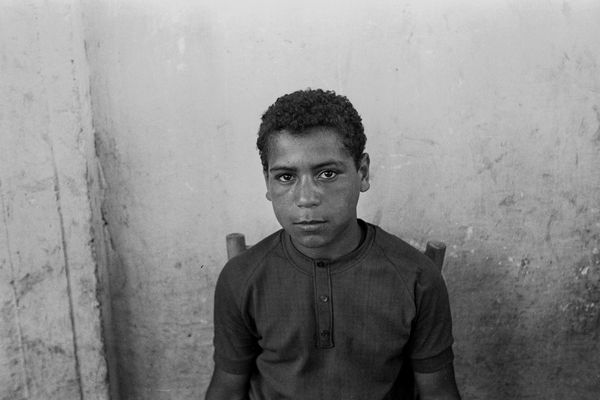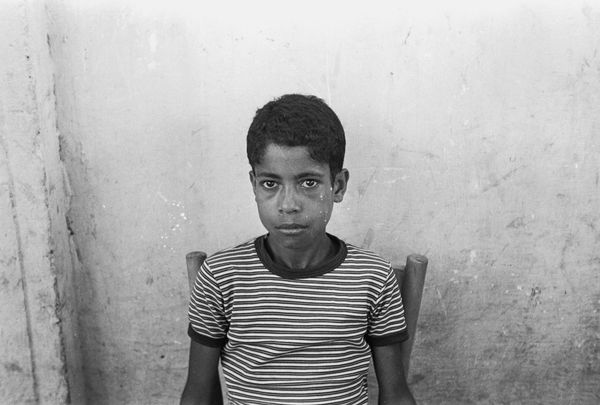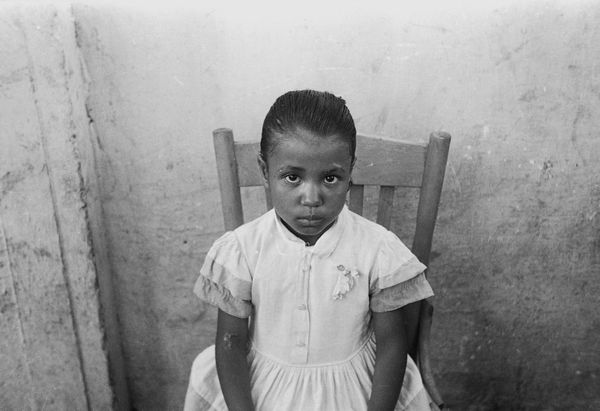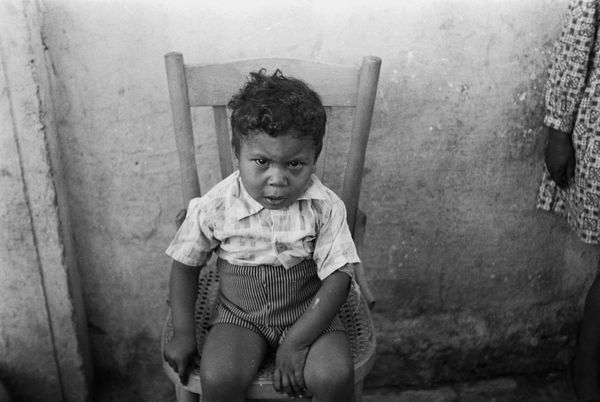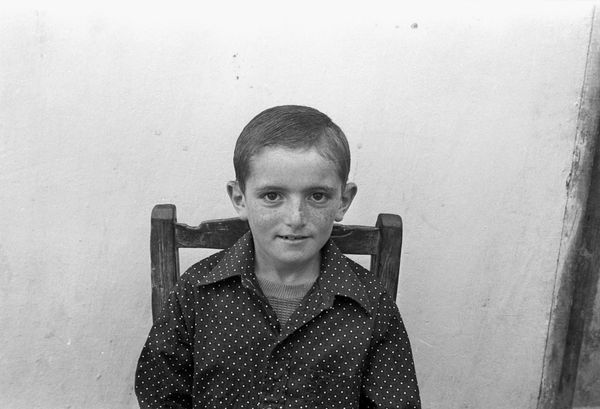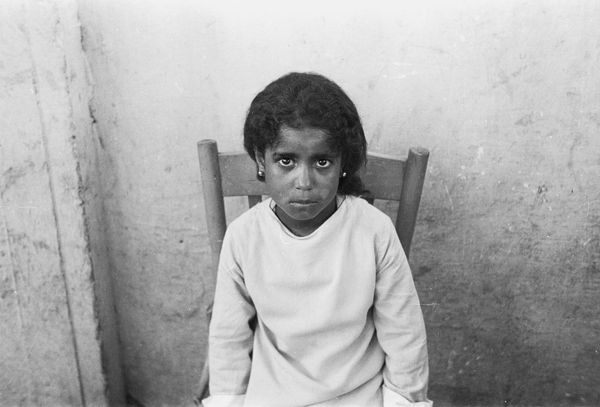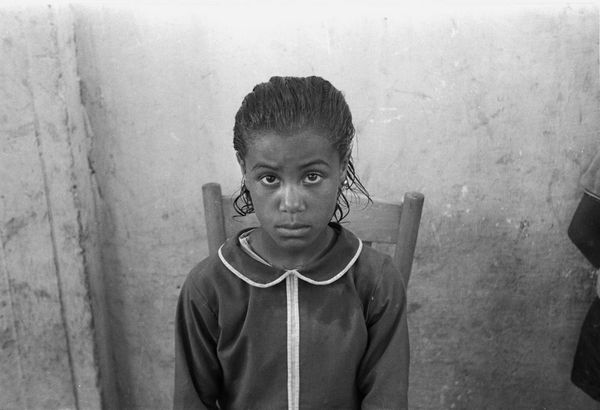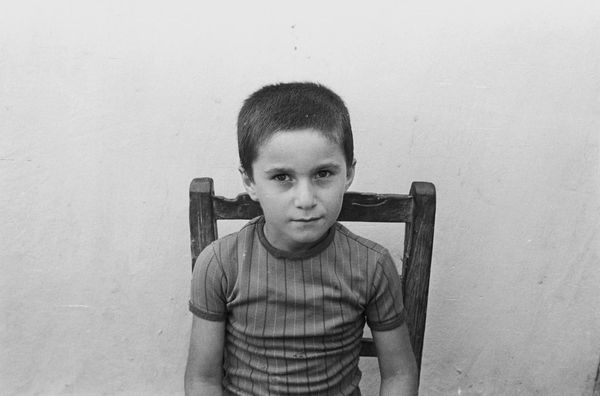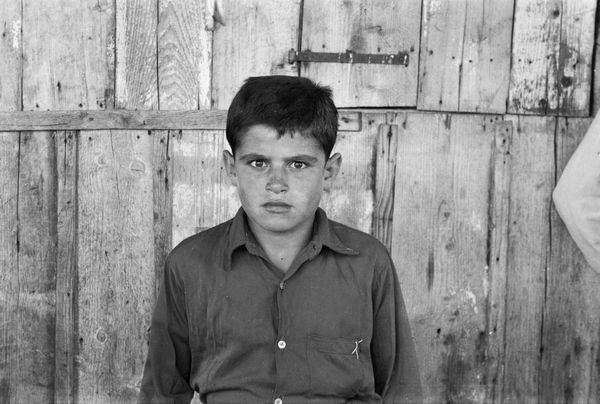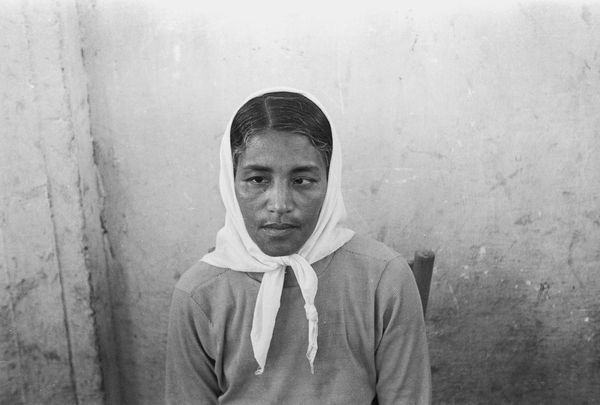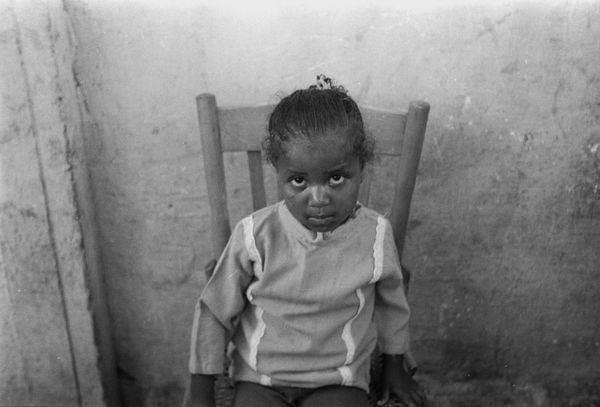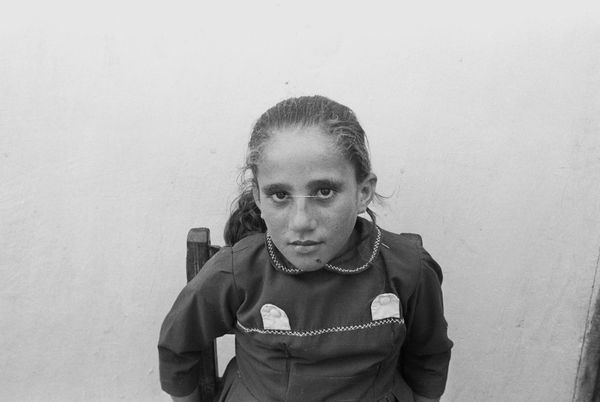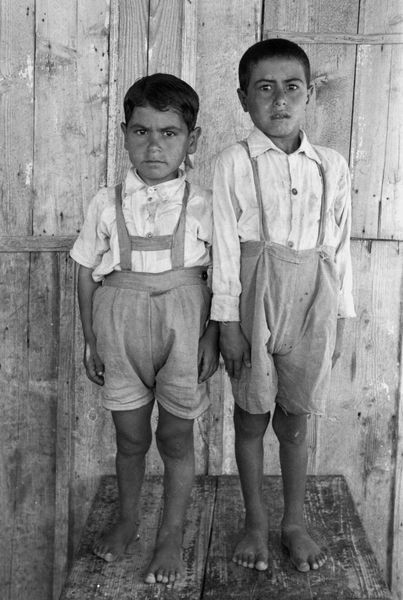
Dimensions: image: 190 x 290 mm
Copyright: © Akram Zaatari, courtesy Hashem el Madani and Arab Image Foundation, Beirut | CC-BY-NC-ND 4.0 DEED, Photo: Tate
Editor: We're looking at "Anonymous. UNRWA school, South Lebanon, 1960s" by Akram Zaatari. It's a black and white photograph, and I find the boy's gaze so direct and unwavering. What do you see in this piece? Curator: This image, sourced from the archive of Hashem el Madani, speaks volumes about the Palestinian refugee experience. Consider the UNRWA school setting—a space of both hope and displacement. Zaatari's curatorial work invites us to examine the power dynamics inherent in representing marginalized communities. Editor: So, you're saying the photograph isn't just a portrait? Curator: Precisely. It's a document of a specific historical moment, charged with political and social implications. The boy's direct gaze challenges us to confront our own roles in perpetuating or dismantling systems of oppression. Editor: I never thought about it that way. It's more than just a photo, it's a conversation starter. Curator: Exactly. Art can serve as a critical tool for social change.
Comments
tate 8 months ago
⋮
http://www.tate.org.uk/art/artworks/zaatari-anonymous-unrwa-school-south-lebanon-1960s-hashem-el-madani-p79413
Join the conversation
Join millions of artists and users on Artera today and experience the ultimate creative platform.
tate 8 months ago
⋮
This work is one of a series of black and white silver gelatin photographs of varying sizes that are collectively titled Objects of study/The archive of studio Shehrazade/Hashem el Madani/Studio Practices. All of the photographs were taken by the Lebanese commercial photographer Hashem el Madani between 1948 and 1982 and compiled into the present group, 117 of which are in Tate’s collection, by the Lebanese artist Akram Zaatari. All of the photographs include people, either alone, in pairs or in small groups, and most were taken in Madani’s studio, although some were shot outside and in his subjects’ homes. The series features men and women and covers a wide age range from babies to elderly people. Almost all of the sitters assume poses deliberately for the camera, sometimes accompanied by props or costumes, and most gaze directly towards the lens. Many of the pictures show subjects interacting in various ways, including embracing, kissing and acting out scenes, such as a mock wrestling match. The photographs are mostly tightly cropped, with the sitter or sitters filling most of the frame, although in some cases the figures are positioned further away from the camera, for instance when shown sitting at a table or standing behind a chair. The photographs tend to have sparse backgrounds, often dominated by a blank posterior wall. They are mounted on white paper, displayed in plain white frames and signed on the back by Madani. Many of them have been organised into categories by Zaatari – such as a group featuring men dressed as Syrian resistance fighters and a collection depicting newly married couples – while the rest are presented individually. Zaatari has stated that although he prefers these groups to be displayed together, this is not a requirement (Akram Zaatari, email to Rachel Taylor, 24 April 2008, Tate Acquisition file).
